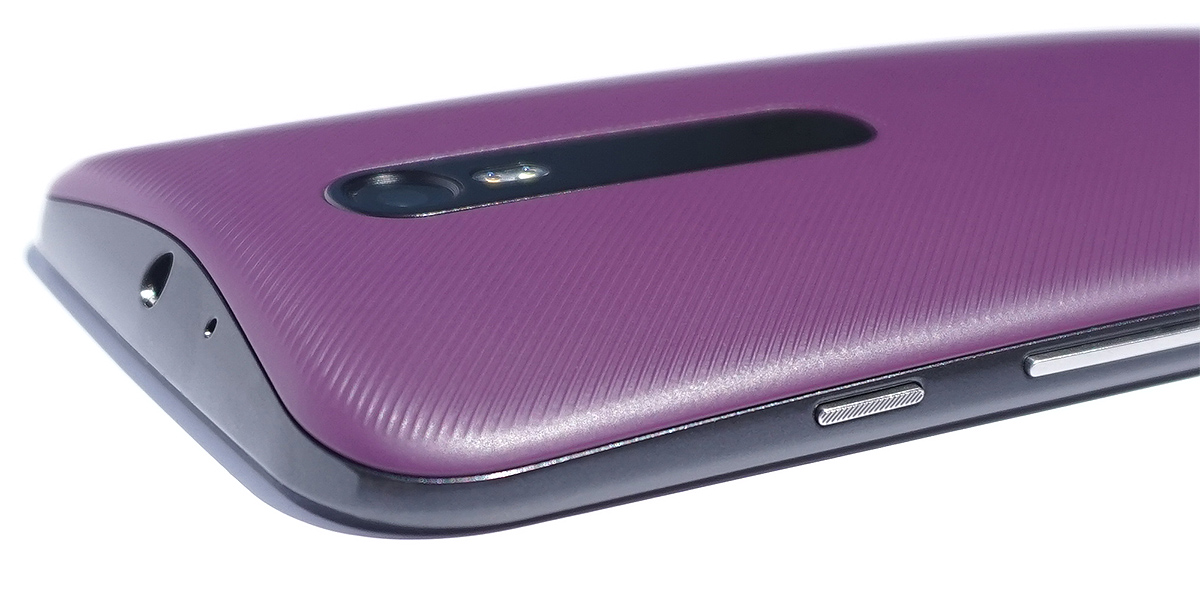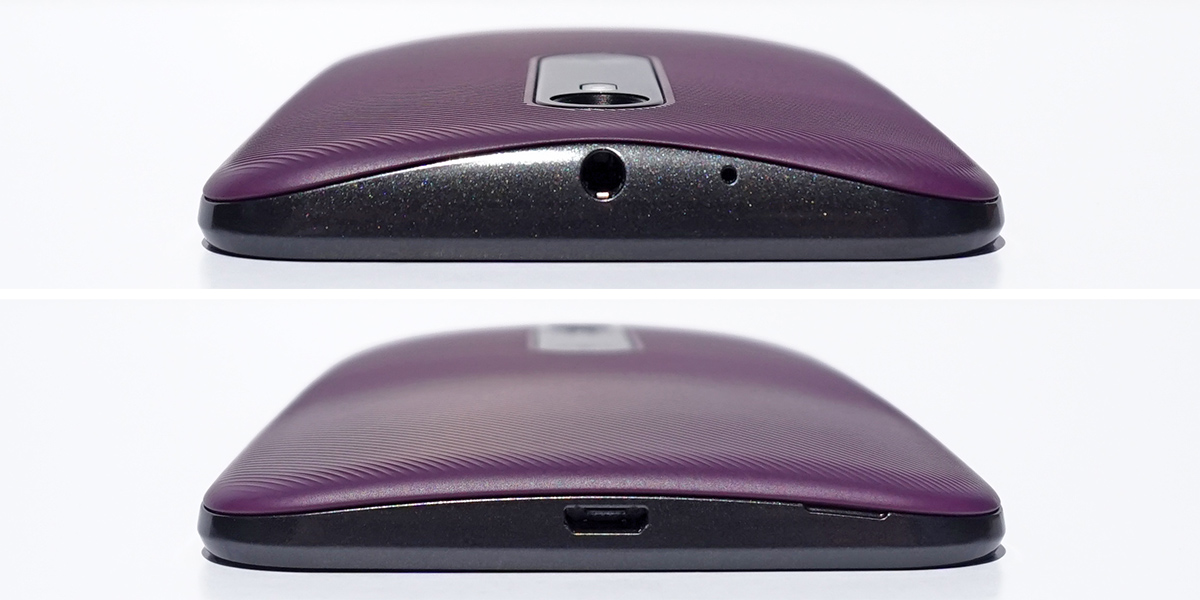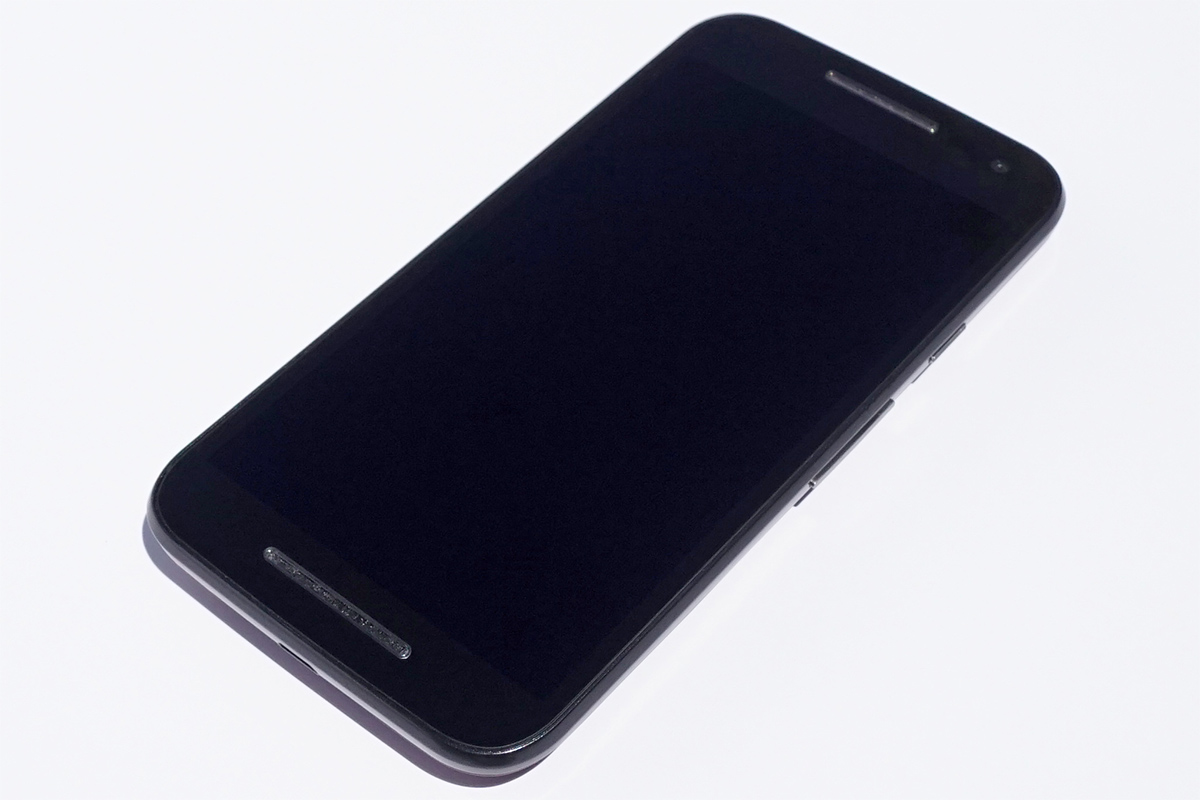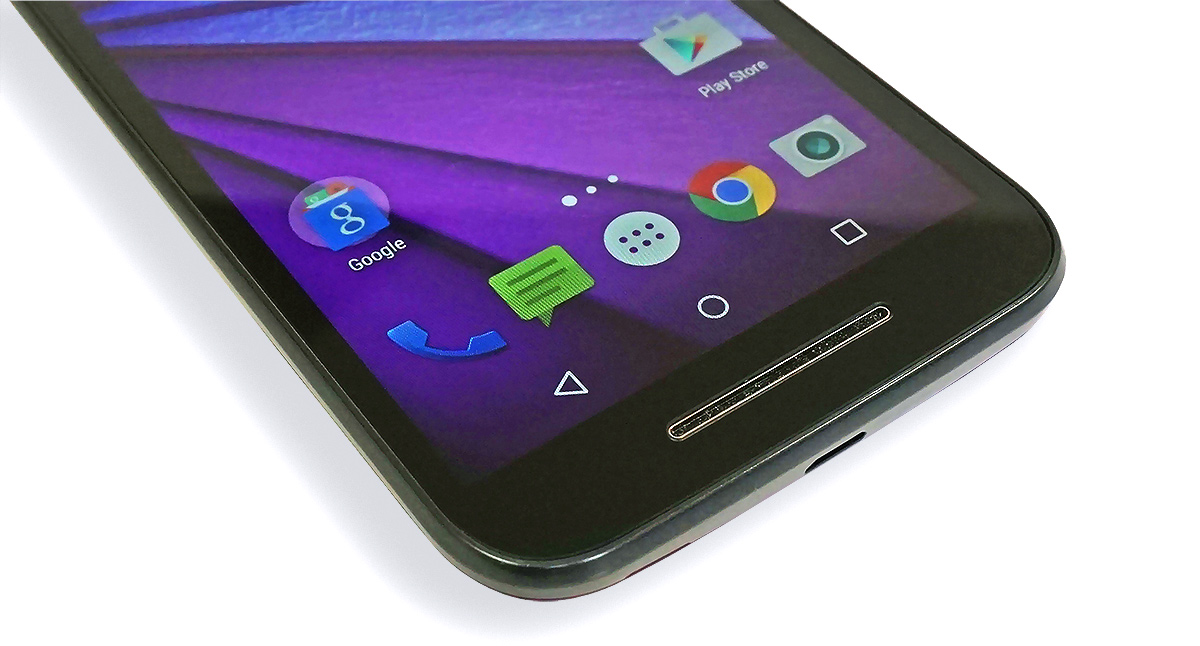Motorola Moto G (3rd gen) Review
Why you can trust Tom's Hardware
Hardware Design
In terms of look and feel, not too much has changed since the last generation. In fact, the new Moto G preserves Motorola’s design language originally seen with the Moto X in 2013. It still uses an all-plastic construction too, although it feels plenty sturdy.
The most obvious change is the new metal accent strip on the back, which stretches from the recessed Motorola logo at one end to the camera at the other. The removable back also gets a new pattern of diagonal ridges that, like the more rubbery surface on last year’s Moto G, make the phone easy to hang on to. The one complaint we have about the new backplate is that crumbs and other detritus tend to get stuck between its ridges. Ultimately, we prefer the back of the new Moto G to the older one because it’s less slippery and it does not gather fingerprints.
Popping off the backplate reveals the micro-SIM and microSD card slots along the top-left side. The larger 2,470mAh battery is still non-removable, however.
The power button and single-piece volume rocker are both made from metal and are located just above center on the right side. Like the current Moto E, the power button has ridges on its face to give it a slightly different feel. The left side of the phone is smooth and bare.
The audio jack and micro-USB ports are centered on the top and bottom, respectively. The micro-USB 2.0 port also supports USB OTG (On-The-Go), which means you can connect other peripherals to it such as keyboards, flash drives, external drives and so on. A second microphone for noise cancellation is on the top, and a small relief on the bottom helps with removing the backplate.
The bezels surrounding the 5-inch 720p screen are a bit larger than what we’re accustomed to seeing on current flagship phones, but they’re a typical size for this price point. The single speaker used for audio playback is located below the screen, while the slightly smaller speaker above the screen functions solely as the phone’s earpiece and does not work when playing music, watching videos, or using the speakerphone. In the upper-right corner is an ambient light sensor and the 5 MP front-facing camera.
One of Motorola’s signature traits is the ability to customize the appearance of its phones using the Moto Maker website, a capability that now extends to the Moto G (only in the U.S.). By combining either a white or black front with one of 10 different colored backplates, you can give your Moto G a very personal look. The metal accent strip on the back also comes in 10 different colors, allowing for some interesting color combinations. Plus, being able choose and preview different color combinations adds a bit more fun to the buying process.
Get Tom's Hardware's best news and in-depth reviews, straight to your inbox.
Even though the screen remains the same size as the previous generation, the overall dimensions for the new Moto G have grown slightly, including the thickness (11.6 mm versus 11 mm), to accommodate the bigger battery. Despite the larger size and 6g increase in weight, it somehow manages to feel slightly lighter than last year’s Moto G. This could be because the older Moto G seems to have less space between the backplate and the body itself. On the new version, this air gap seems to be larger, which is noticeable when you press on the backplate as it makes a small creaky sound.
Another bonus for the Moto G (3rd gen) is IPX7 water resistance. As long as the backplate is snapped on snugly, it can withstand immersion in fresh water up to 3 feet for 30 minutes. The Moto G will not actually work while submerged, and it’s not dustproof, but it should survive the occasional spill or dunk in a toilet.
Lucian Armasu is a Contributing Writer for Tom's Hardware US. He covers software news and the issues surrounding privacy and security.
-
MasterWandu Just got the 16GB phone. Best value for money phone I have ever owned. Cannot believe the quality / specs at the price point. It's about as quick / specc'ed as my Nexus 4 that it replaces, but it trumps the Nexus 4 with it's expandable memory and 4G/LTE capabilities. Couldn't recommend it more!Reply -
gangrel I don't game on my phone, so that's never been an issue for me. I do note that app install speeds are very good; download speed I can't really say, as I do all of that on wifi, not cell. I'm quite happy with it.Reply -
Glock24 Why is the ZenFone 2 listed in the specs / comparison table , but not on benchmarks? It's $20 cheaper than the Moto G 16GB/2GBReply -
MattBoothDev Only issue is it released a couple of months ago, but isn't getting Marshmallow. Bit poor, that.Reply -
RCFProd Reply16943558 said:Only issue is it released a couple of months ago, but isn't getting Marshmallow. Bit poor, that.
it is getting Marshmallow no?
http://www.androidstandard.com/android-m-will-hit-moto-g-3rd-gen-and-2nd-gen-in-this-fall/ -
ZolaIII Not impressed. There are similar spec Chinese phone's with more than 2x lower price like for instance Elephane Trunk. I know it's weird Elephone made a decent phone but strange things happen. As much as Motorola got a developer community and long suport it's not worth 2+x.Reply -
MobileEditor ReplyWhy is the ZenFone 2 listed in the specs / comparison table , but not on benchmarks? It's $20 cheaper than the Moto G 16GB/2GB
There are two different versions of the ZenFone 2 (well more if you count the special editions). The less expensive version is shown in the spec table since it's closer in price to the Moto G. We only tested the more expensive version with a faster SoC, so that's why it's not in the benchmark charts. Plus, we already included the more expensive/faster Z8 as the upper bound in the charts. I figured this was more relevant, since it has a more common SoC configuration.
- Matt Humrick, Mobile Editor, Tom's Hardware





